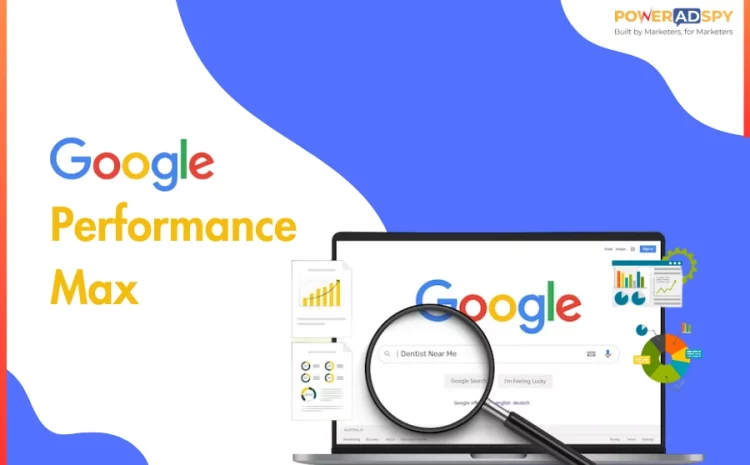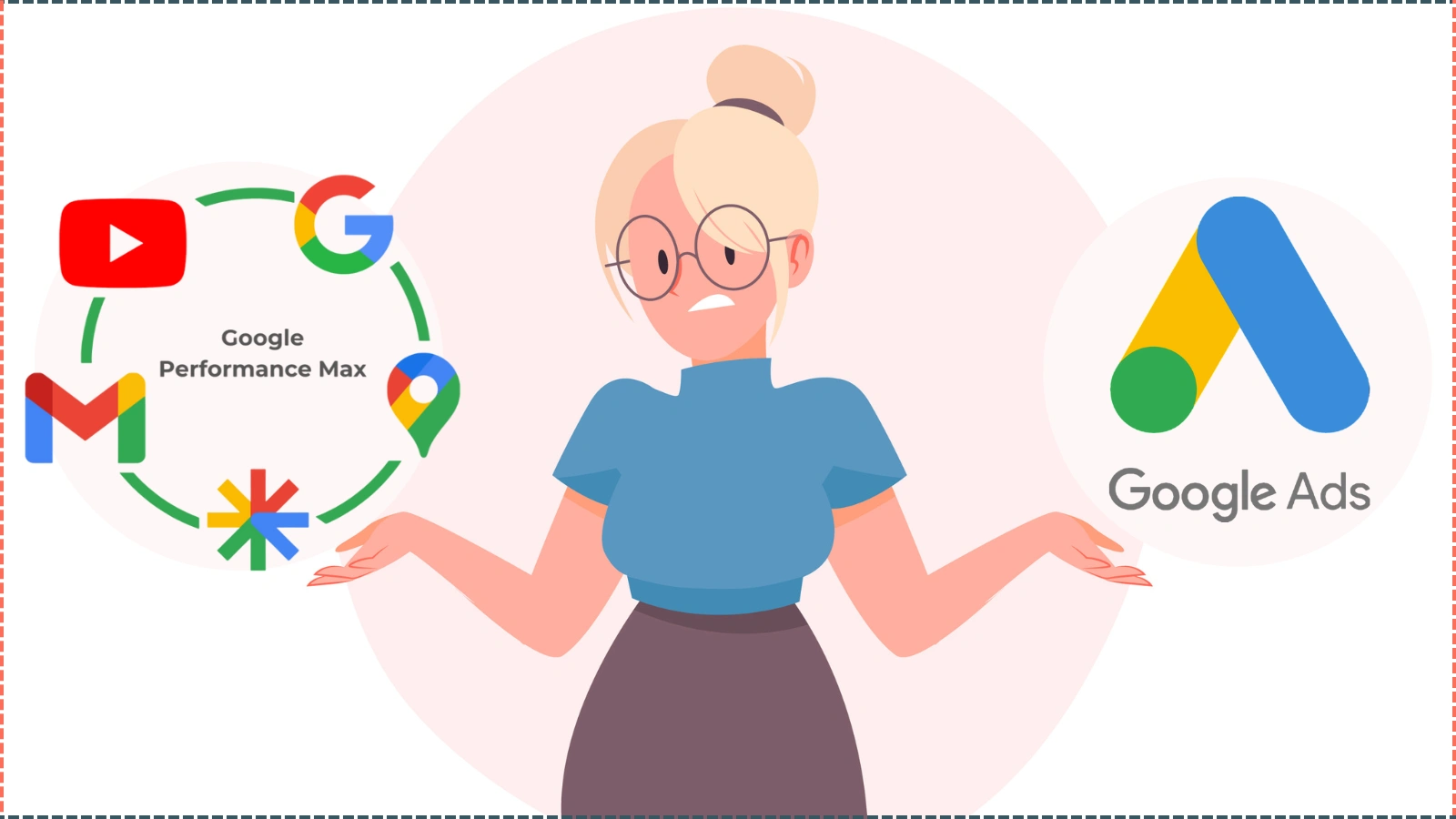Google Performance Max: All You Need To Know About It
In recent years, the Google Performance Max campaign has become increasingly important. It was introduced in 2021 and has since sparked both positive and negative reactions from advertisers.
However, with the powerful use of AI and machine learning, ignoring PMax is no longer an option. Even those who prefer traditional PPC methods can see its potential.
It is vital to understand what it is, how it works, and how to use it effectively. So, let us dive in and learn all about the Google Performance Max campaign to keep your advertising efforts on track.
In a hurry? Listen to the blog instead!
What Is Google’s Performance Max?
PMax is a unique campaign type in Google Ads that uses its vast data on users’ behavior to tailor ads to individual searches. It uses machine learning to boost conversions across all of Google’s ad placements.
Instead of sticking to specific forms of ads, like search results or product listings, this type of ad campaign lets advertisers use various assets like text, videos, feeds, and images in one campaign.
It was first experimented in limited accounts in 2020 and 2021 and then fully launched in 2022. Google has added new features to support Performance Max, like brand exclusions and detailed reporting on assets. It is one of the many new important ad updates released by Google.
Google’s PMax campaigns are a powerful form of campaigns. But what makes them so powerful? Let us learn more about it.
What Makes Performance Max Effective?
Google designed Performance Max to be a versatile campaign type that can meet the requirements of many advertisers. PMax campaign uses advanced technology to increase conversions by adjusting bids and where ads get viewed in real-time.
It relies on smart bidding to achieve these aims. Here are some key features that help make this happen-
Capabilities In Targeting:
The targeting of Google ads performance max campaigns depends on keywords, audiences, and product feeds. PMax campaign optimizes these elements for better conversion rates. It broadens targeting beyond initial settings, leveraging custom audience interests and product data. While unable to exclude specific keywords, it uncovers new opportunities.
A well-organized product feed is vital for Shopping campaigns, enabling Google to display products effectively. The robust feed can allow Performance Max to discover untapped potential by branching out from its initial strategy.
Management Of Bids:
Google Performance Max uses Smart Bidding to manage CPC bids, offering two strategies: Maximize Conversions or Maximize Conversion Value with optional targets.
Your account needs enough past data for Google to learn from and work well. Newer accounts should start with Search or Standard Shopping campaigns to gather data and maximize impressions and conversions before transitioning to PMax campaigns.
Sophisticated Auctions And Aligning With Intentions:
Google gathers a lot of data about how people use the internet. Smart Bidding quickly analyzes millions of these data points, but we do not know what they are.
Trusting the system is vital for it to work well. Imagine 100 people searching for the same thing; each is at a different buying stage. The system tries to show ads to those most likely to buy.
In eCommerce, it helps by providing detailed product information to appear in more searches, whether someone is browsing or ready to buy.
Acquiring New Customers While Considering Brand Limitations:
PMax offers features like bidding higher for new customers and excluding specific brands from showing ads on branded queries. While these may not matter much for small advertisers, large brands aiming to grow can focus on more valuable opportunities.
Using these features together can significantly speed up and improve profitability in the scaling process. With asset group-level reporting, advertisers can segment products effectively.
It is possible to exclude specific product segments from Performance Max campaigns. You can move them to Standard Shopping or revert them to PMax campaigns based on performance.
Dynamic Searching Capabilities:
Google now lets you easily upgrade Dynamic Search campaigns to Performance Max with just one click, which was an option that was not available.
Local and Smart Shopping campaigns are now incorporated in PMax, which may lead to Dynamic Search campaigns getting phased out soon. It is a good idea to start testing Google Performance Max now.
This change offers a timely opportunity to transition and explore the benefits of PMax campaigns before Dynamic Search campaigns become obsolete.
How Is Performance Max Different From Other Google Ads Campaigns?
Google Performance Max differs from other Google Ads campaigns by focusing less on specific ad placements. The system optimizes bids and placements in real time to drive conversions as efficiently as possible.
It offers broader targeting options and uses machine learning to deliver better results across various platforms and channels.
Ad targeting can become effortless by utilizing ad analysis tools like PowerAdSpy. It is an exceptional ad intelligence tool for analyzing competitors’ Google ads. With the assistance of this tool, you can optimize your ad strategies effectively. Let us learn something about this fantastic tool before proceeding further.
PowerAdSpy: Improve Your Google Ads Strategies Easily
PowerAdSpy is a popular Google ad spy tool for analyzing your competitors’ ads. It gives you insights into successful ads, including audience reach and engagement metrics like comments and shares.
By utilizing the capabilities of this tool, like sophisticated search, in-depth analysis, and strategy snooping, you get insights into vital tactics of your competitors’ ads. As a result, you will comprehend the Google ad strategies of your rivals more clearly.
When you take assistance from PowerAdSpy, you get the following beneficial features like:-
Advanced Search And Filters:-
PowerAdSpy simplifies the process of uncovering top-performing ads and keywords that drive the most paid and organic traffic to your competitors. It uniquely allows you to search and filter by Affiliate Networks and Keywords. Additionally, you can filter by consumer interests, providing deeper insights into potential leads.
Thorough And Detailed Analysis:-
Discover which Google Ad campaigns from your competitors attract the highest number of clicks. Identify the keywords they’ve purchased and determine which keyword groups are most successful for their ad campaigns, along with other valuable metrics, all with just one click.
Quicker Way Of Monitoring Competitor Advertisements:-
Explore your competitors’ ad campaigns to find out exactly what strategies are effective for them, removing any guesswork. Learn from the results of every ad split test they’ve conducted to replicate their success for yourself.
Gain Comprehensive Insights Through Keyword Searches:-
Choose a keyword or keywords from ad copies and instantly access the top-performing ads related to your targeted keyword search. With this simple keyword search process, you can gather all the information you need about competitor-driven ad research with just one click.
Thus, PowerAdSpy is the best Google ad spy tool that assists considerably in your Google ads campaign and helps to give details about the well-performing Google ads of your competitors.
Having learned about this tool, let’s check out a few things that make Google Performance Max different from other ad campaigns.
Stock And Advertising Expenditure:
You can manage bidding and budgeting at the campaign level in Google Performance Max campaigns. However, unlike other campaigns, it doesn’t provide detailed spending breakdowns. To understand it, you need to analyze many Google ads examples properly.
Despite targeting less premium inventories, it still aims at converting customers. It can also reduce costs, especially in high-cost industries, by expanding targeting. Keep in mind that initial spending is higher as it gathers data.
With newly created Google ad accounts, although you may try using PMax campaigns, but it will make you spend more. Having the data about your target audience and conversions could help you to optimize your campaign in a much better way.
Also Read:
7 Important Google Ads Updates You Need To Know
7 Google Ads Optimization Tips to Boost Your ROI Now
7 Google Ads Examples And How To Use Their Strategies In 2024
Reporting:
In PMax, you can view reports at the campaign and asset group levels in the Reporting tab of Google Ads. Some users overlook the option to create custom reports based on various factors like landing page, placements, location, time of day, and products in your feed.
You can also analyze how much of your spending is influenced by your data feed versus your ad creatives. The updated insights tab allows viewing data for any chosen time frame, with added features like downloading keywords, so ensure to explore it thoroughly.
Clarity And Transparency:
Using third-party scripts to track ad placements is an option, but it is better to avoid it. In PMax campaigns, you can’t control where your ads appear but rather influence the algorithm.
You’ll lose detailed keyword visibility but gain access to broader keyword themes. Accepting this is key to success. While you can’t see placements directly, there’s an account-level report with impression data.
However, it lacks cost and revenue breakdowns. The aim is to streamline data like Facebook’s Advantage Plus format, focusing on actionable insights.
Involvement:
In Google Performance Max, you mainly guide the system and ensure it stays on track without making constant adjustments. Instead of requiring you to change things often, you need to focus on monitoring and making significant improvements.
Set up the campaign, step back, and observe while working on background tasks. Concentrate on ensuring data accuracy, integrating with CRM for lead generation, and enhancing landing page content to boost profitability and efficiency.
So, these are how Google Performance Max varies from all other Google ads campaigns. Let us now learn about its merits and demerits.
Merits And Demerits Of Performance Max:
Like every other campaign, Google Performance Max has its merits and demerits. Following are the pros and cons of PMax campaigns.
Merits:
It enables you to expand beyond initial intent.
Google Performance Max is an excellent method to experiment with different campaign varieties.
It refreshes your marketing focus.
Demerits:
It may incur high initial costs.
Google’s PMax campaigns are more challenging than Google suggests.
Its suggestions fall short of being ideal.
Concluding Words:
In conclusion, Google Performance Max is a powerful tool, revolutionizing the way campaigns are managed and optimized. It offers extensive benefits, including advanced targeting capabilities, automated bidding strategies, access to valuable insights and Google ads optimization.
However, it also comes with its challenges, such as high initial costs and the need for careful monitoring and management. PMax campaigns can vastly increase the efficacy and efficiency of advertising efforts despite certain disadvantages.
By understanding its features, merits, and demerits, advertisers can harness its full potential to drive success in their digital marketing efforts.













